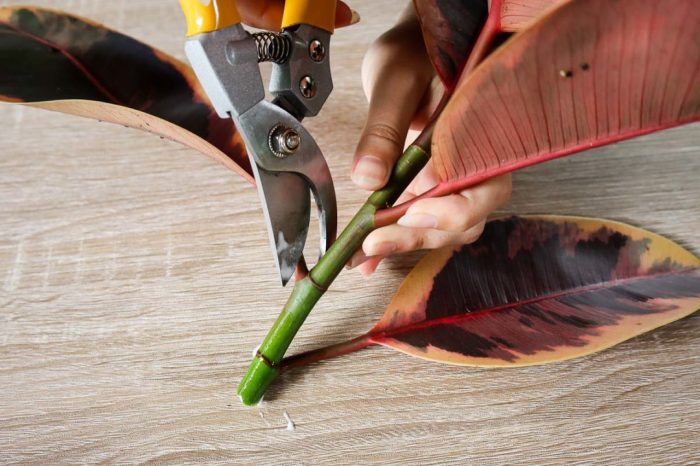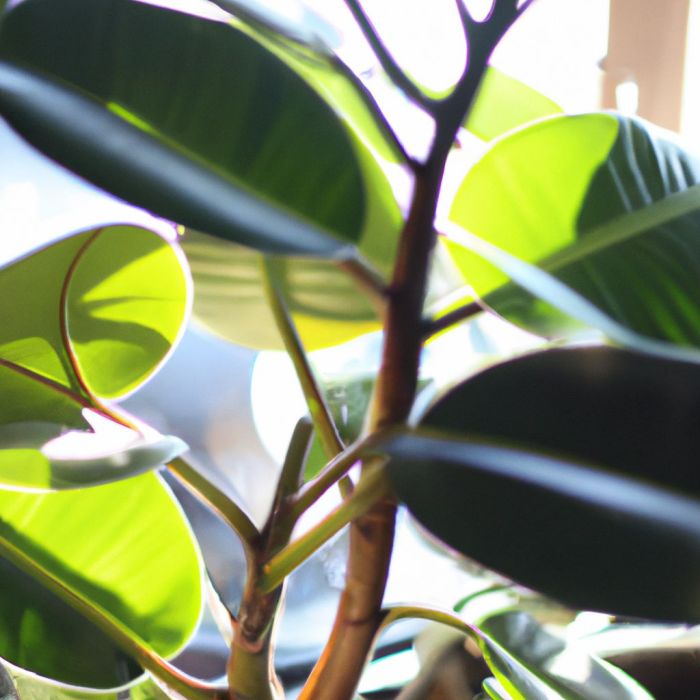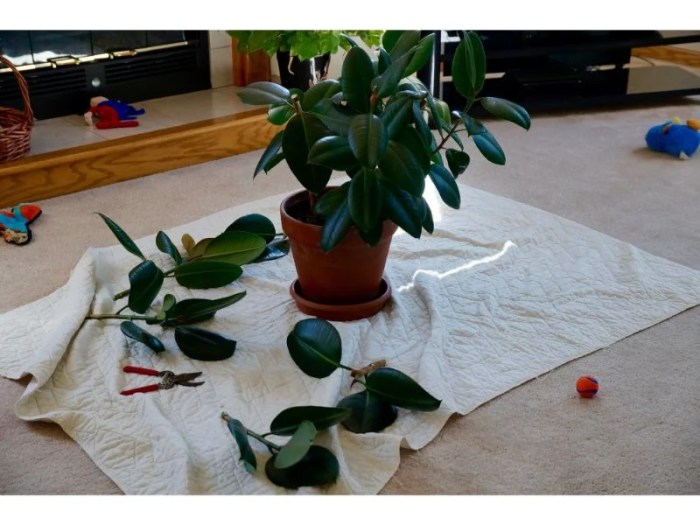How to trim rubber plants – Trimming rubber plants, also known as Ficus elastica, is an essential part of maintaining their health and beauty. This comprehensive guide will provide you with the knowledge and techniques you need to trim your rubber plants effectively, promoting new growth, removing diseased or damaged leaves, and enhancing their overall appearance.
Reasons for Trimming Rubber Plants: How To Trim Rubber Plants
Trimming rubber plants offers both aesthetic and practical benefits. Aesthetically, trimming can help shape the plant, encourage bushier growth, and improve its overall appearance.
Practical Benefits, How to trim rubber plants
Trimming rubber plants also provides practical benefits. Removing diseased or damaged leaves prevents the spread of disease and promotes the growth of healthy new foliage. Trimming can also help control the plant’s size and shape, making it easier to manage in indoor spaces.
Tools and Materials for Trimming

Before embarking on the task of trimming rubber plants, it is essential to gather the necessary tools and materials. These include:
Pruning Shears
- Sharp, sterilized pruning shears are essential for clean, precise cuts that minimize damage to the plant.
- Sterilization can be achieved by wiping the blades with a solution of 1 part household bleach to 9 parts water.
Gloves
- Gloves protect the hands from the sticky sap produced by rubber plants.
Clean Cloth
- A clean cloth is useful for wiping away excess sap from the plant or tools.
Step-by-Step Trimming Guide

Trimming rubber plants is a crucial part of their maintenance, ensuring optimal growth and aesthetics. Here’s a step-by-step guide to help you trim your rubber plant effectively:
Identifying Leaves to Trim
Before trimming, it’s essential to identify which leaves need attention. Look for leaves that are:
- Discolored, yellowing, or brown
- Damaged or torn
- Overgrown or blocking sunlight from reaching other leaves
Making Precise Cuts
Use sharp, clean shears or pruning scissors for precise cuts. Avoid tearing or breaking leaves, as this can damage the plant.
- Cut leaves at a 45-degree angle, just above a leaf node (the point where the leaf joins the stem).
- Avoid cutting too close to the stem, as this can weaken the plant.
Special Considerations for Different Varieties

Rubber plants encompass a diverse range of varieties, each possessing unique characteristics that necessitate specific trimming techniques.
To keep your rubber plant looking its best, regular trimming is essential. By removing dead or damaged leaves and stems, you encourage new growth and prevent disease. Trimming also helps shape the plant and keep it at a manageable size.
For more information on how to trim your plants, visit how to trim the plants for a comprehensive guide. Whether you’re dealing with rubber plants or other indoor varieties, proper trimming techniques can ensure their health and longevity.
Variegated Rubber Plants
Variegated rubber plants, adorned with striking white or cream-colored leaves, require careful pruning to maintain their variegated patterns. Avoid trimming too close to the variegated areas, as this can result in the loss of variegation. Instead, focus on removing any damaged or discolored leaves, as well as those that obstruct light penetration.
Burgundy Rubber Plants
Burgundy rubber plants, known for their deep burgundy-colored foliage, benefit from regular trimming to encourage bushier growth. Trim back leggy stems to promote new growth, but be cautious not to remove too much foliage, as this can diminish the plant’s vibrant coloration.
Rubber plants, known for their lush foliage, can benefit from occasional trimming to maintain their shape and encourage new growth. To trim a rubber plant, use sharp shears to remove any dead or damaged leaves, as well as any overgrown or leggy stems.
For a more comprehensive guide on plant trimming, including tips on how to trim jade plants, visit how to trim jade plants . Additionally, rubber plants may require pruning to remove any diseased or pest-infested branches, ensuring the overall health of the plant.
Post-Trimming Care

Post-trimming care is essential to ensure the health and longevity of rubber plants. Proper care includes watering, fertilizing, and providing optimal lighting conditions to promote healthy growth and recovery.
Trimming rubber plants is essential for maintaining their shape and encouraging new growth. Similar to basil plants, trimming should be done carefully to avoid damaging the plant. For a detailed guide on trimming basil without causing harm, refer to this article . Returning to rubber plants, trimming should be done with sharp, clean shears to ensure precise cuts and minimize damage.
Watering
After trimming, rubber plants require regular watering to replenish lost moisture. Water the plant deeply, allowing the water to reach the root zone, but avoid overwatering, as this can lead to root rot. Allow the top few inches of soil to dry out between waterings.
Fertilizing
Fertilizing rubber plants after trimming is important to provide essential nutrients for growth and recovery. Use a balanced liquid fertilizer diluted to half strength and apply it every two to three weeks during the growing season. Avoid overfertilizing, as this can damage the plant.
Lighting
Rubber plants prefer bright, indirect light. After trimming, place the plant in a location that receives ample light but avoid direct sunlight, which can scorch the leaves. Rotate the plant regularly to ensure even growth.
Final Review
By following the step-by-step guide and considering the special requirements of different rubber plant varieties, you can ensure that your plants thrive and bring a touch of nature and elegance to your home or office space.
Questions and Answers
Why is it important to trim rubber plants?
Trimming rubber plants removes diseased or damaged leaves, promotes new growth, and enhances their overall appearance.
What tools do I need to trim rubber plants?
You will need sharp pruning shears, gloves, and a clean cloth.
How often should I trim my rubber plant?
Trim your rubber plant as needed, typically every few months or when you notice diseased or overgrown leaves.